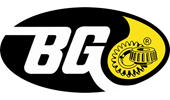AUTONET TV
Archive for January 2023Objects in the Mirror (Rearview Mirror Safety and Maintenance)Posted January 29, 2023 8:44 AMYou may remember a song that went, "Objects in the rearview mirror may appear closer than they are." While that was a song about life's lessons, there are a few things we should all know about how important rearview mirrors are to safe driving. While new electronic devices are helping drivers be aware of surrounding traffic in high-tech ways, the good old rearview mirror is still a dependable way of letting you know what's around you. There are usually 3 on each vehicle, 1 attached to the windshield inside and 2 attached outside on each of the front doors. It's important that they be adjusted properly before you start driving (not while you're driving). Experts say the windshield rearview mirror should cover the area behind the vehicle while the outside mirrors should not simply duplicate that view but extend it to the sides, where blind spots normally are. Your rearview mirrors must be able to hold the positions they're adjusted in; it there's play in them or they move around, you'll never be sure they're pointed in the direction that will let you see where traffic is. The one on the windshield must be firmly attached. If it won't stay where you want it, head to your service facility where they can tighten it or replace any parts necessary to let the mirror maintain its aim. If it has fallen off the windshield completely, a technician can reattach it with the proper adhesives or fasteners. There may be electronics that need to be properly connected as well. The outside mirrors cover your blind spots and they must be able to hold their adjustments, too. Many adjust electronically; switches and motors can fail, electrical connections can detach or become corroded and the reflective glass can crack, discolor or develop a hazy fog. A technician can diagnose and repair those problems and recommend any replacement parts you might need. Mirrors that are adjusted manually also should be restored to proper working order in order for you to maintain this important rear visibility. Drivers don't think about their rearview mirrors all that much. On reflection, don't they deserve respect and care for the important job they do? McLearen Shell Full of Hot Air (Air Conditioning)Posted January 22, 2023 11:55 AMIn warm weather, you want to be in a cool vehicle. When we're talking cool, we don't mean stylish or trendy, but cool as in not sweltering inside. And if your vehicle's air conditioner stops working correctly, it seems to always break at the worst time—during a heat wave. Automotive air conditioning problems fail for a number of reasons:
When you bring your vehicle into our service center, we'll run a series of diagnostic tests to figure out what isn't working correctly. The air conditioning system has a lot of parts. There are electrical and mechanical components plus a series of hoses and tubes that all can wear out over time. Any one of these can fail. A lot of drivers think they have a "Freon leak" and believe that if they get their AC system recharged with the refrigerant, everything will be fine. But AC systems are so complex, it usually takes a trained technician to accurately figure out where the problems are. Sometimes the solution is simple. If your blower motor wears out or there's a fuse that has blown, the technician can replace the bad parts and you'll quickly be back to enjoying your rolling refrigerator. But when compressors or condensers go bad, those are much more involved and expensive to fix. For instance, electrical problems can sometimes lead to acid to build up and corrode other parts of your AC system. Sometimes that causes so much damage, your whole air conditioning system has to be replaced. That's why it's always a good idea to have your AC regularly maintained. Our technicians can find a problem early and prevent more expensive repairs down the road. That's really the cool way to go. McLearen Shell Road Ready (Trip Inspection)Posted January 15, 2023 8:39 AMMaybe you've been cooped up for a while and are yearning for a change of scenery. Or maybe you need to visit a relative who lives far away. You choose not to fork out the big bucks for airline tickets, so it's time for a road trip. Make sure you're road ready by having your vehicle professionally inspected before the big drive. One of our technicians can check out several of your vehicle's most important systems so you can be more confident that you'll be able to go the distance without a breakdown. Here are a few things a trip inspection may include: Your vehicle stops with brakes that, in turn, stop the tires. They must both be in sound condition. The technician can look at your tire tread, the condition of the sidewalls, and note the tires' age. Brakes have pads and rotors that should meet certain specs, so an expert inspection of their condition is important, too. A technician can check other vital fluids such as engine coolant, power steering, transmission, and windshield washer fluid. Your wipers must be in good condition so you can see, and they're often one of the most neglected parts of a vehicle. Your headlights must work correctly and be aimed properly so you can see and so that you're not blinding oncoming drivers. They're powered by your battery, and a technician will check how old yours is and how well it holds a charge, all important for reliable starting. For cabin comfort, your climate control system needs to work correctly, which means both heat and air conditioning. If things need to be repaired - before the trip will be a lot more convenient than trying to do it while you're traveling. The technician can inspect hoses and belts, two things that frequently fail on a long trip. And the big advantage of having a pro look over your vehicle is that they not only know what to look for but also can make the repairs the right way. Now that's the ticket to being road ready. McLearen Shell To Fix or Not To Fix (Tire Repair)Posted January 8, 2023 9:55 AMYou know that sinking feeling when you realize one of your tires has a problem. It may be making an odd noise or behaving oddly when you're driving. You may hit a pothole or curb and one suddenly goes flat. Or you may head back to your vehicle and discover it has one tire deflated without a clue of what must have happened to it. With a lot of different tires hitting the streets these days, the issue of whether to have a tire repaired or replaced can be tricky, and we strongly recommend you have a trained technician help you make that decision. One of the most common causes of flat tires is picking up a screw or nail in the tread area. Many of those can be patched and plugged if the puncture isn't more than ¼ inch/6 mm in diameter. Most tires can handle two of this type of repair, but any more and you should buy a new tire. If there's a puncture or bulge in the sidewall or shoulder, the rule of thumb is it's not repairable. The sidewall doesn't have the reinforcements that the tread area does. In fact, any puncture that's more than a ½ inch/12 mm away from the edge of the tread should not be fixed. Many newer vehicles have no spare tires (to save weight and fuel) and instead have a type of tire called "run-flat." Sometimes, the only way you know they're deflated is when the tire pressure monitor alerts the driver. Driving on them more than 50 miles/80km can render them un-repairable. They may be fixable if you pulled off to the side of the road before driving on them too long. Our technicians can evaluate whether they can be driven further or should be replaced. Other vehicles with no spare include a can of tire sealant and a compressor. If you use it, tire experts say to have the tire professionally repaired as soon as possible. If you have had a flat tire, try not to drive on it unless it's necessary to get your vehicle away from a dangerous situation. Our technicians can evaluate any tire you may be having problems with and recommend whether repair or replacement is the best option. Your safety is riding on your tires. McLearen Shell Taking the Heat (Heater Hose Maintenance/Repair)Posted January 1, 2023 12:08 PMIf you have an internal combustion vehicle, you know it has a lot of hoses that carry various fluids. And if you have a heater in your vehicle, you'll have heater hoses. A heater hose connects to and from the engine so some coolant can be circulated through a little radiator called a heater core. In cold weather, that heater core acts as a heat exchanger to heat up your cabin. Even in the hot weather, the heater hoses can prove problematic. That's because they may remain pressurized even though you're not running your heater. Heater hoses are made out of tough materials since they must handle heat and pressure. But even the durable rubber, plastic and metal they are made out of can crack or leak from years of use. That means coolant can be sprayed out into the engine compartment or leak onto a driveway or garage floor. You may be able to see a puddle of coolant under your vehicle or perhaps smell the odor of the coolant under the hood. Some say it has a sweet smell. Another sign coolant may be leaking out of the heater hoses is your engine may be running hotter. You'll be able to tell by watching the heat gauge on your dash. Let's say your heat gauge usually points just slightly below halfway between the C and H (Cold and Hot) of the heat gauge. But now it is just slightly above. That's enough to tell you that the coolant temperature has gone up a little, a possible sign of trouble. This is a good time to swing by your service facility and have them take a look. If they catch the leak when it's small, it's a relatively simple matter of draining the coolant, replacing the hoses and replacing the coolant. Sometimes, though, a heater hose can suddenly burst and a lot of coolant can leak out quickly. That can, in turn, cause your engine to start to overheat. In that case, you may see your vehicle's temperature gauge shoot up pretty quickly. Then it's best to pull over and have your car towed to a repair facility since driving with no coolant can cause severe engine damage. Preventative maintenance is your best insurance against heater hose problems. A technician will periodically check for any signs of cracks or leaks. You should expect to replace a heater hose at least once during the time you own your vehicle. McLearen Shell | ||
SearchArchiveMay 2016 (16)June 2016 (4) July 2016 (5) August 2016 (4) September 2016 (4) October 2016 (5) November 2016 (4) December 2016 (4) January 2017 (5) February 2017 (4) March 2017 (4) April 2017 (4) May 2017 (5) June 2017 (4) July 2017 (5) August 2017 (3) September 2017 (3) October 2017 (4) November 2017 (5) December 2017 (3) January 2018 (5) February 2018 (3) March 2018 (4) April 2018 (5) May 2018 (4) June 2018 (4) July 2018 (5) August 2018 (4) September 2018 (5) October 2018 (4) November 2018 (4) December 2018 (5) January 2019 (5) February 2019 (4) March 2019 (5) April 2019 (4) May 2019 (4) June 2019 (5) July 2019 (4) August 2019 (4) September 2019 (5) October 2019 (4) November 2019 (4) December 2019 (5) January 2020 (5) February 2020 (4) March 2020 (5) April 2020 (4) May 2020 (5) June 2020 (4) July 2020 (4) August 2020 (5) September 2020 (4) October 2020 (4) November 2020 (5) December 2020 (4) January 2021 (6) February 2021 (4) March 2021 (4) April 2021 (4) May 2021 (5) June 2021 (4) July 2021 (4) August 2021 (5) September 2021 (4) October 2021 (5) November 2021 (3) December 2021 (4) January 2022 (6) February 2022 (4) March 2022 (4) April 2022 (4) May 2022 (5) June 2022 (4) July 2022 (5) August 2022 (4) September 2022 (4) October 2022 (5) November 2022 (4) December 2022 (4) January 2023 (5) February 2023 (4) March 2023 (4) April 2023 (5) May 2023 (4) June 2023 (4) July 2023 (5) August 2023 (4) September 2023 (4) October 2023 (5) November 2023 (4) December 2023 (5) January 2024 (5) February 2024 (4) March 2024 (5) April 2024 (4) May 2024 (4) June 2024 (5) July 2024 (4) August 2024 (4) September 2024 (5) October 2024 (4) November 2024 (4) December 2024 (5) January 2025 (4) February 2025 (4) March 2025 (5) | CategoriesFuel Economy (8)Alternator (5)Service Standards (3)Headlamps (4)Maintenance (9)Transmission (4)Timing Belt (3)Fluids (6)Battery (9)Steering (7)Keys to a long lasting vehicle (2)What Customers Should Know (58)Auto Safety (4)Air Conditioning (7)Brakes (11)Exhaust (6)Fuel System (5)Customer Detective Work (1)Fuel Saving Tip: Slow Down (2)Cooling System (7)Safety (2)Safe Driving (1)Drive Train (2)Tires and Wheels (2)Dashboard (1)Tire Rotation and Balancing (2)Oil Change (5)Service Intervals (1)Suspension (2)Shocks & Struts (3)Check Engine Light (3)Winter Prep (3)Fuel Pump (1)Tires (7)Trip Inspection (1)Alignment (5)Automotive News (1)Brake Service (3)Spark Plugs (1)Windshield Wipers (2)TPMS (1)Inspection (2)Shocks and Struts (2)Fuel Filter (1)Water Pump (1)Differential Service (1)Wheel Bearings (1) | |
Reviews
|
Excellent work. Josh always does all the maintenance for my Porsche, VW Taureg, and Subi Outback. I can always count on him doing what is needed and never trying to upcharge me for work that is not needed. Jack, 11/30/2021 |
Took our Acura RDX in for brake service today. The staff at McLearen Shell did an excellent job, replacing the front discs & rotors. They advised that the rear pads still had 50% material remaining. Have had a variety of automobiles serviced at this service station over the last 25 years and there service remains outstanding and very reasonably priced. Highly recommended. Rob Saunders, 04/21/2022 |
Great team at McLearen Shell, have regularly changed out brakes, bulbs, oil, valve cover gasket, spark plugs, etc. on a 1998 Gen 4 Camry LE for the past three years. Trustworthy, professional and they know these older still-running vehicles. Always respectful to Ladies interested in vehicle mechanical function and maintenance as well Margaret, 06/16/2021 |













